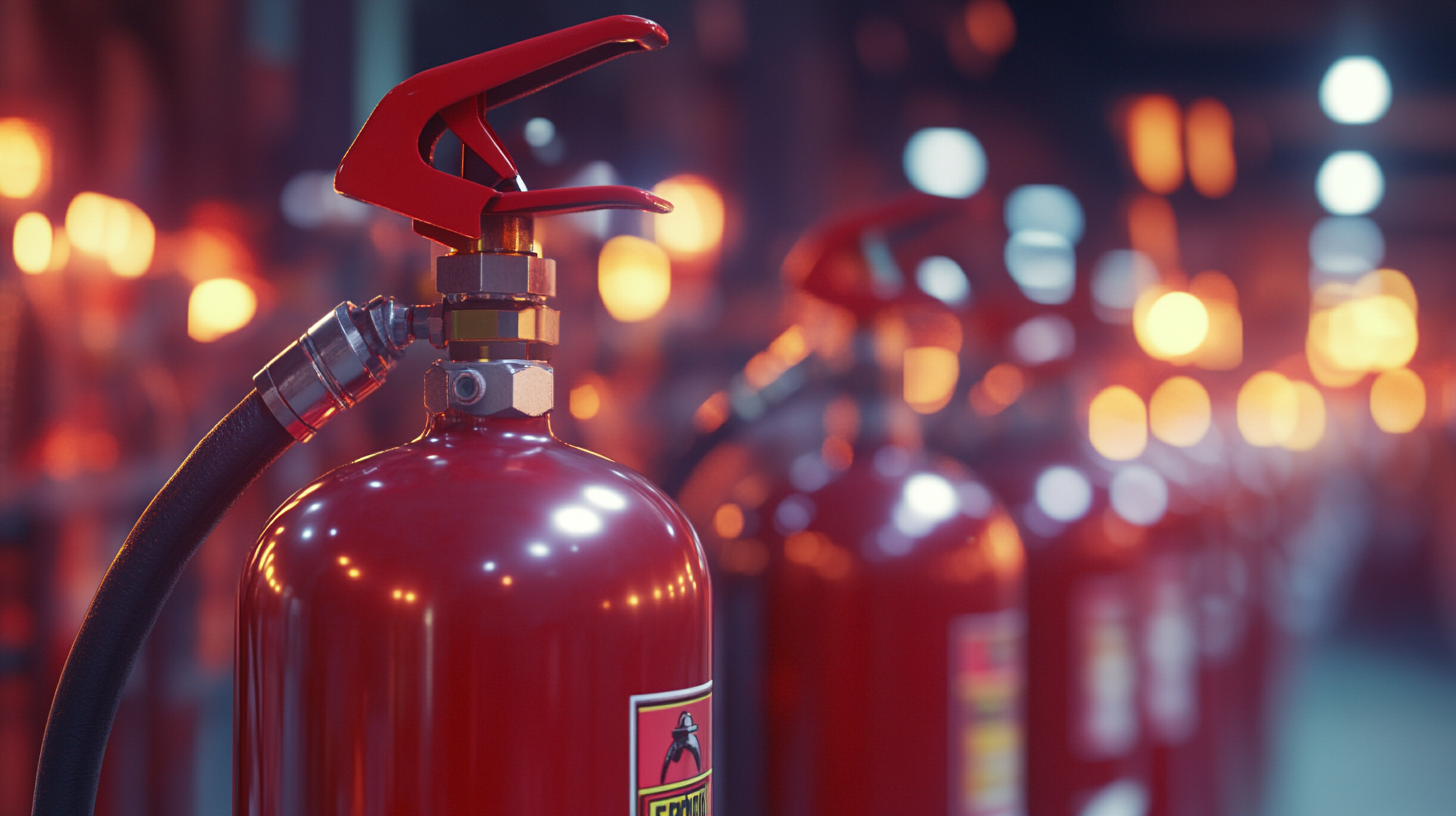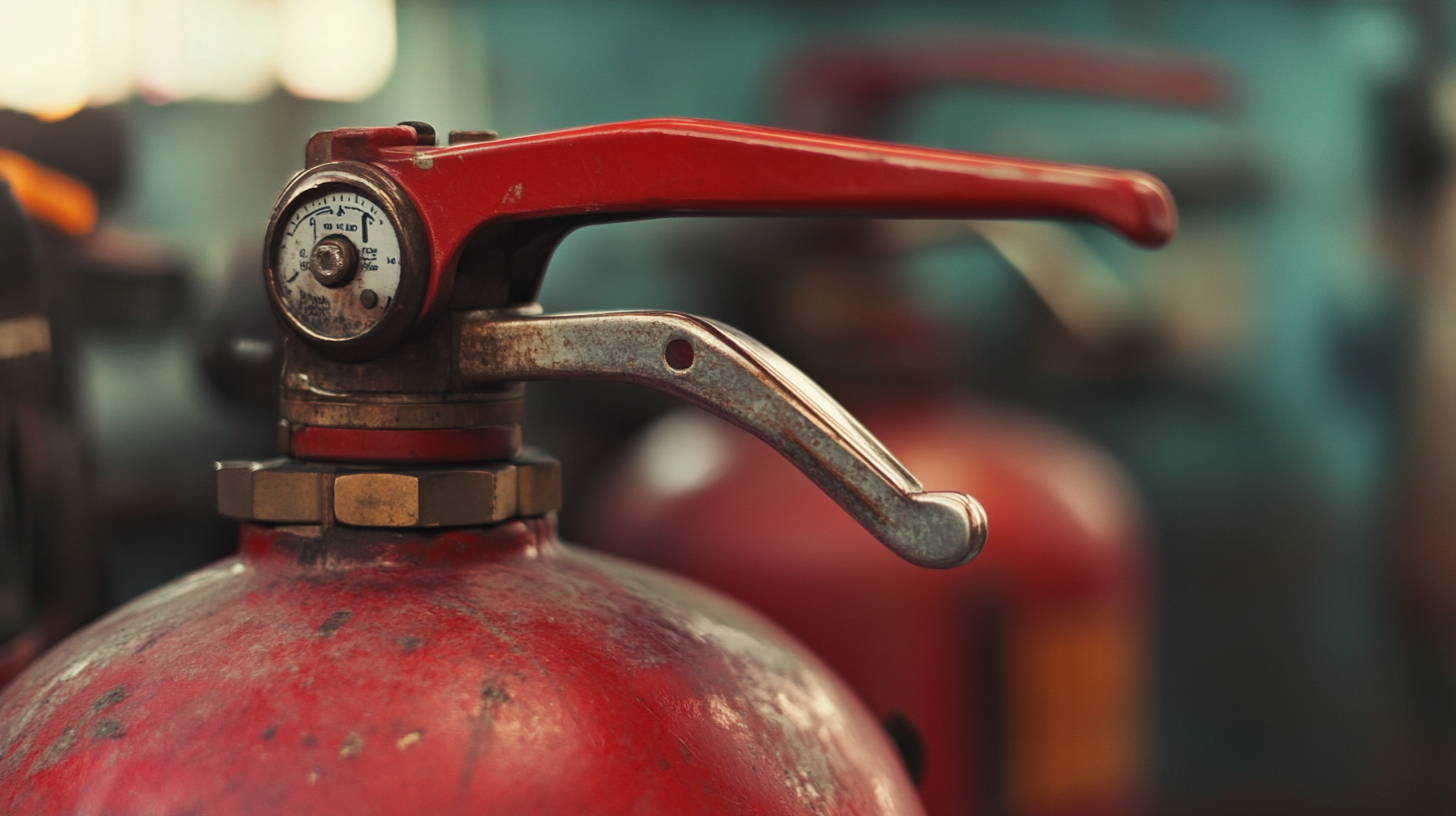Unique Styles of Fire Extinguishers That Excel in Equipment Protection
 In today's fast-paced industrial environment, safeguarding equipment from potential fire hazards is of paramount importance. One often overlooked solution is the unique styles of fire extinguishers specifically designed for equipment protection. A fire extinguisher for equipment is not just a standard firefighting tool; it is engineered to cater to the diverse needs of different machinery and electronic devices, providing targeted defense against various types of fires caused by electrical faults, flammable liquids, and more.
In today's fast-paced industrial environment, safeguarding equipment from potential fire hazards is of paramount importance. One often overlooked solution is the unique styles of fire extinguishers specifically designed for equipment protection. A fire extinguisher for equipment is not just a standard firefighting tool; it is engineered to cater to the diverse needs of different machinery and electronic devices, providing targeted defense against various types of fires caused by electrical faults, flammable liquids, and more.
As industries evolve and technology advances, the significance of having specialized fire extinguishing systems becomes increasingly evident. In this blog, we will explore the innovative designs and functionalities of fire extinguishers aimed at protecting valuable equipment, ensuring optimal safety and compliance in workplaces.
Exploring the Top 5 Fire Extinguisher Styles for Optimal Equipment Safety
When it comes to protecting valuable equipment from fire hazards, choosing the right fire extinguisher style is crucial. The top five options—water mist, CO2, foam, dry powder, and wet chemical extinguishers—each offer unique advantages that can effectively safeguard your machinery and electronics.
Water mist extinguishers, for instance, are excellent for cooling and extinguishing fires without leaving harmful residue, making them ideal for delicate equipment. On the other hand, CO2 extinguishers are perfect for electrical fires, as they displace oxygen without causing damage to the equipment.
Tip: Always consider the environment where your equipment is located when selecting an extinguisher. For example, if you’re working in a kitchen or near cooking oils, a wet chemical extinguisher can be invaluable due to its ability to handle grease fires safely.
Foam extinguishers are versatile and suitable for both liquid and solid fires, making them a popular choice for warehouses and industrial settings. Dry powder extinguishers provide quick reactions to various types of fires, including those involving metals, while wet chemical extinguishers are specifically designed for kitchen fires.
Tip: Regularly inspect and maintain your fire extinguishers to ensure they are in working condition, and familiarize your staff with their operation for a swift response during emergencies.
The Advantages of Using Foam Fire Extinguishers in Sensitive Environments
Foam fire extinguishers have gained recognition for their effectiveness in protecting sensitive environments, such as data centers and laboratories. Unlike traditional extinguishers, foam variants form a barrier between the fuel and oxygen, which not only suppresses flames but also minimizes collateral damage to equipment. This makes them an ideal choice for settings where electronic devices and delicate machinery are prevalent, reducing the risk of fire while preserving valuable assets.
When using foam fire extinguishers, it’s important to consider a few tips. First, ensure that foam extinguishers are compatible with the specific type of fire hazard in your environment, as they excel in dealing with flammable liquids. Second, regular maintenance and training on how to effectively use foam units can enhance safety protocols, ensuring that personnel are confident in their operation during emergencies. Lastly, positioning these extinguishers strategically around sensitive areas can provide quick access and improve response time in case of a fire outbreak.
The design of foam fire extinguishers also offers unique advantages in terms of cleanliness. Unlike dry powder extinguishers that can create a mess and obstruct visibility, foam extinguishers can be easily cleaned up post-incident, thereby minimizing downtime in critical environments. This cleanliness, coupled with their efficient performance, underscores the importance of choosing the right type of fire protection for sensitive equipment.
Advantages of Using Foam Fire Extinguishers in Sensitive Environments
Why CO2 Fire Extinguishers are Essential for Protecting Electrical Equipment
 Carbon dioxide (CO2) fire extinguishers are critical for protecting electrical equipment due to their unique properties. Unlike water or foam extinguishers, CO2 extinguishers discharge a gas that displaces oxygen, effectively suffocating the fire without leaving any residue. According to the National Fire Protection Association (NFPA), electrical fires caused nearly $1.3 billion in direct property damage in 2020 alone, underscoring the necessity for efficient and safe extinguishing methods. Given that many high-value electronic devices are sensitive to water damage, CO2 extinguishers emerge as essential tools for any environment housing electrical equipment, from data centers to manufacturing facilities.
Carbon dioxide (CO2) fire extinguishers are critical for protecting electrical equipment due to their unique properties. Unlike water or foam extinguishers, CO2 extinguishers discharge a gas that displaces oxygen, effectively suffocating the fire without leaving any residue. According to the National Fire Protection Association (NFPA), electrical fires caused nearly $1.3 billion in direct property damage in 2020 alone, underscoring the necessity for efficient and safe extinguishing methods. Given that many high-value electronic devices are sensitive to water damage, CO2 extinguishers emerge as essential tools for any environment housing electrical equipment, from data centers to manufacturing facilities.
Industry research indicates that CO2 fire extinguishers can extinguish fires involving live electrical equipment, allowing them to be safely utilized without the risks associated with traditional extinguishing agents. Furthermore, National Institute for Occupational Safety and Health (NIOSH) reports show that CO2 can reduce the likelihood of reignition, providing an added layer of safety during fire emergencies. As industries increasingly rely on complex electronic systems, implementing CO2 extinguishing solutions is a proactive measure that safeguards not only equipment but also the financial integrity of businesses.
The Role of Clean Agent Fire Extinguishers in High-Tech Facilities
In high-tech facilities, the protection of sensitive equipment is paramount, and clean agent fire extinguishers play a vital role in ensuring safety without causing damage. These extinguishers utilize specialized gases that suppress fires while being safe for electronics, making them ideal for data centers, laboratories, and research facilities. Unlike traditional extinguishers, clean agents evaporate quickly and do not leave residue, allowing for uninterrupted operations even in the face of fire emergencies.
When selecting clean agent fire extinguishers, consider the specific needs of your facility. It’s essential to assess the types of equipment that require protection and choose extinguishers that are compatible with those systems. Additionally, regular training for staff on the proper use of these extinguishers can enhance safety protocols.
Tip: Always ensure that clean agent extinguishers are strategically placed throughout the facility, easily accessible yet out of the way of normal operations. This can significantly reduce response time during emergencies, allowing for swift action without compromising the integrity of high-tech equipment. Remember to schedule routine inspections to verify that all extinguishers are charged and in working order, as maintenance is critical for effective fire protection.

Choosing the Right Fire Extinguisher: A Guide to Diverse Protection Needs
When it comes to equipment protection, selecting the right fire extinguisher is crucial. According to the National Fire Protection Association (NFPA), equipment fires account for approximately 25% of all fire incidents in commercial settings, highlighting the importance of tailored fire safety solutions. Different extinguishers cater to various fire classes, ensuring optimal efficacy and safety. For example, Class C extinguishers, which are designed for electrical fires, utilize non-conductive agents, making them essential for protecting critical machinery without the risk of electrical shock.
Moreover, recent industry reports reveal that the market for specialized fire extinguishers has grown significantly, with a projected increase of 7% annually through 2025. This trend underscores the growing recognition of diverse protection needs across different sectors. Hydrated agents in Class A extinguishers, for instance, are highly effective for fires involving combustible materials, while Class K extinguishers are tailored for cooking oil and fat fires, crucial for commercial kitchens where unique fire risks exist. By understanding these distinctions and selecting the appropriate extinguisher for specific environments, businesses can enhance their safety protocols and protect valuable equipment from potential hazards.
